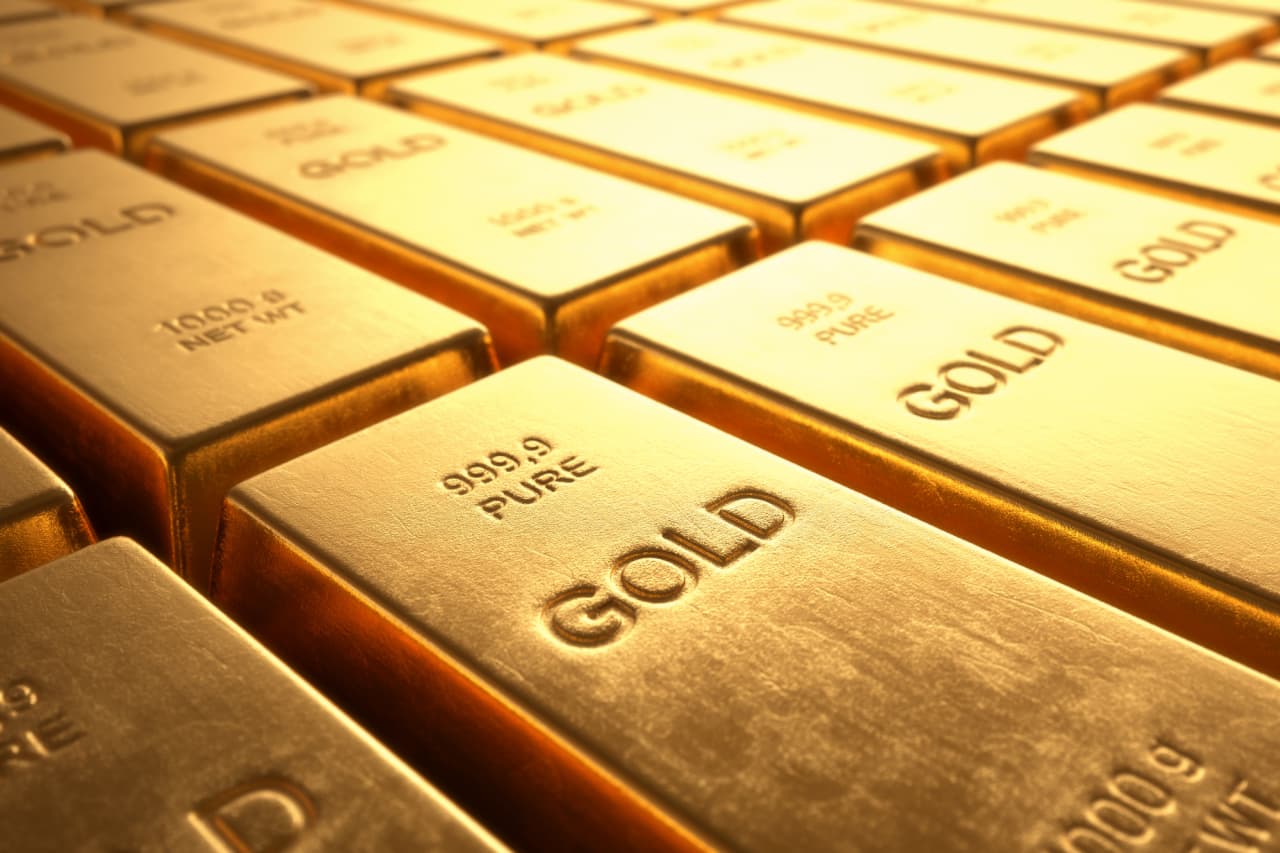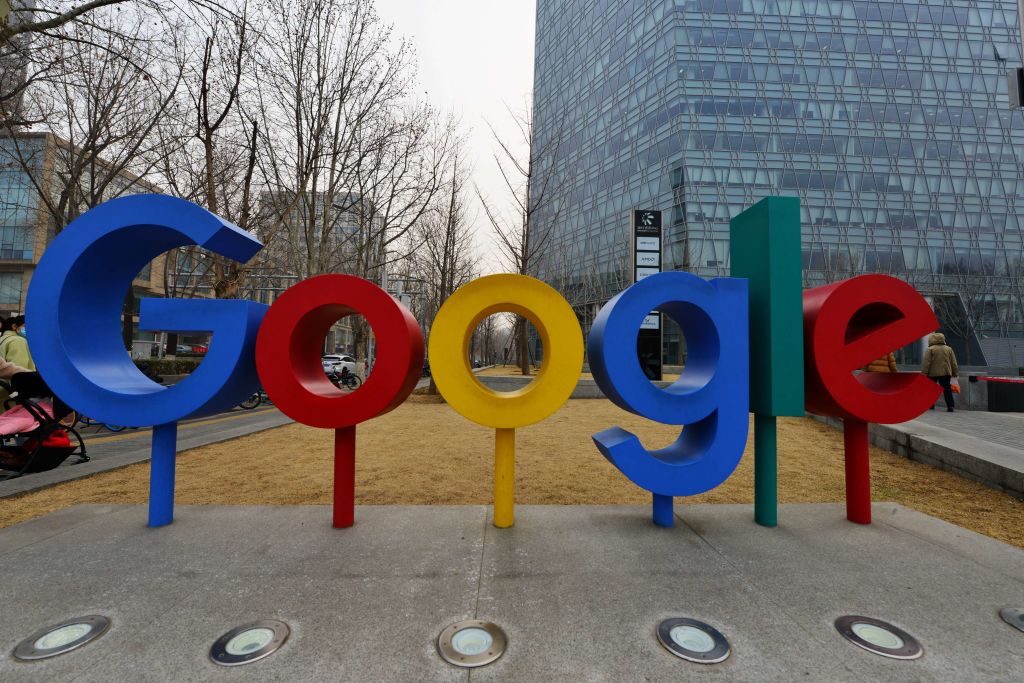Is gold’s strength a flash in the pan or a golden opportunity?
The yellow metal just completed its best two-quarter stretch in eight years on its way to a record high of $2,319 per ounce today.
That performance comes as a bit of a surprise at first blush. After all, gold prices typically rise when interest rates decrease and fall when rates swing higher. Yet recent economic data suggest the Federal Reserve will have to keep interest rates elevated for longer than previously thought to tame inflation.
There has been some good news on inflation. Last Friday, for instance, we learned that the core personal consumption expenditures (PCE) index, which is the Fed’s preferred inflation measure, rose just 2.8% year over year and 0.3% month over month, as expected , in February.
Shorter-term trends paint a more challenging picture for the Fed, however, given that the three-month core PCE trend reflects 3.5% annual growth compared with 2.5% in late 2023.
“The relevant news is that recent inflation data are rising briskly,” writes Michael Lewis, who heads Free Market Inc., an economic consulting firm. This translates into higher rates for longer as the odds of a June rate cut have fallen to 58% from 73% a month ago. Mary Daly, the chief of the San Francisco Federal Reserve, said Tuesday there is “ really no urgency ” to cut rates. Fed Chairman Jerome Powell echoed that sentiment today.
Monday’s ISM manufacturing index report reinforces that narrative . In March, the index delivered its strongest growth since September 2022, rising to 50.3, easily exceeding the expectation of 48.4.
Not surprisingly, on Monday, stocks fell as the yield on the 10-year bond surged to 4.32%. Tuesday we saw more of the same with key stock indexes falling and the 10-year yield rising as high as 4.4% , its highest level in 2024 . Higher rates have been pressuring stocks, bonds, and cryptocurrencies .
Gold is powering higher, however. March 22 is the last day that gold prices fell. The price of gold has risen 9.7% this year while the yield on the 10-year has gained 10.4%.
“Gold is the near-zero yielder that is then showing record demand, despite a world where high nominal yields and carry are still dominant,” wrote Deutsche Bank macro strategist Alan Ruskin in a newsletter last week. “If gold prices won’t go down in an inflated nominal yield world, they can surely go up as the G-10 yield plateau gives way, and yields likely start their descent in” the second half of this year, Ruskin continued.
So what explains gold’s recent rise amid higher rates? Strong demand from China is one factor . The People’s Bank of China went on a buying spree last year, acquiring a net 225 metric tons of gold—the most among all central banks and the country’s biggest expansion of gold reserves since 1977.
With China’s central bank reserves at a record high, its consumers are also actively buying the precious metal, partly due to concerns about their economy and stock market. Among Chinese investors, demand for gold-related ETFs is “booming,” according to The Wall Street Journal, and Chinese imports of gold have surged 51% in the first two months of 2024 compared with the same period last year.
Gold’s more volatile counterpart, silver, surged to a two-year high today, gaining 5% to $27.22 per ounce. Unlike gold, which is at a record high, silver would need to rise more than 80% to reach its 2011 high of near $50.
“The formerly nonchalant silver finally appears ready to join gold’s advance,” John Roque, a technical analyst at 22V Research, wrote in a note, Barron’s reported . “$30 as the first target and then, presuming a breakout, $40 as the second target.” Silver prices are up 12.5% this year.
The entire commodities complex is showing relative strength as the Bloomberg Commodity Index is at its highest level since December . Crude oil is 20.6% higher this year.
Safe-haven demand for gold may increase given fast-rising geopolitical tensions in the Middle East. Moreover, concerns about the national debt are growing louder and more pointed from notable figures across the political spectrum. Unfortunately, there is no indication that politicians will quit pandering to short-term considerations (meaning votes) by making tough choices. As such, expect them to keep playing Kick the Can until one of them slices their foot.
Given all of this, the outlook for gold remains bright . On March 29, Barron’s cited an analysis by economist Charles Gave, founder of Gavekal Research. “The S&P 500 is on the verge of becoming overvalued versus the stock of capital, while gold is almost undervalued against my measure of retained earnings.”
Gave added, “Gold is ‘undervalued’ against the S&P 500 by a hefty -52% and -13% versus its own long-term trend. In contrast, the S&P 500 stands 33% above its own long-term trend level.” Recommending that investors hedge equity exposure with at least 20% of their portfolio in gold, Gave concluded, “At this point my preference based on the relative position of the two reserve assets is to favour gold, followed by equities.”
 Copyright 2020, Dow Jones & Company, Inc. All Rights Reserved Worldwide. LEARN MORE
Copyright 2020, Dow Jones & Company, Inc. All Rights Reserved Worldwide. LEARN MORE
What a quarter-million dollars gets you in the western capital.
Alexandre de Betak and his wife are focusing on their most personal project yet.
CIOs can take steps now to reduce risks associated with today’s IT landscape
As tech leaders race to bring Windows systems back online after Friday’s software update by cybersecurity company CrowdStrike crashed around 8.5 million machines worldwide, experts share with CIO Journal their takeaways for preparing for the next major information technology outage.
Be familiar with how vendors develop, test and release their software
IT leaders should hold vendors deeply integrated within IT systems, such as CrowdStrike , to a “very high standard” of development, release quality and assurance, said Neil MacDonald , a Gartner vice president.
“Any security vendor has a responsibility to do extensive regression testing on all versions of Windows before an update is rolled out,” he said.
That involves asking existing vendors to explain how they write software, what testing they do and whether customers may choose how quickly to roll out an update.
“Incidents like this remind all of us in the CIO community of the importance of ensuring availability, reliability and security by prioritizing guardrails such as deployment and testing procedures and practices,” said Amy Farrow, chief information officer of IT automation and security company Infoblox.
Re-evaluate how your firm accepts software updates from ‘trusted’ vendors
While automatically accepting software updates has become the norm—and a recommended security practice—the CrowdStrike outage is a reminder to take a pause, some CIOs said.
“We still should be doing the full testing of packages and upgrades and new features,” said Paul Davis, a field chief information security officer at software development platform maker JFrog . undefined undefined Though it’s not feasible to test every update, especially for as many as hundreds of software vendors, Davis said he makes it a priority to test software patches according to their potential severity and size.
Automation, and maybe even artificial intelligence-based IT tools, can help.
“Humans are not very good at catching errors in thousands of lines of code,” said Jack Hidary, chief executive of AI and quantum company SandboxAQ. “We need AI trained to look for the interdependence of new software updates with the existing stack of software.”
Develop a disaster recovery plan
An incident rendering Windows computers unusable is similar to a natural disaster with systems knocked offline, said Gartner’s MacDonald. That’s why businesses should consider natural disaster recovery plans for maintaining the resiliency of their operations.
One way to do that is to set up a “clean room,” or an environment isolated from other systems, to use to bring critical systems back online, according to Chirag Mehta, a cybersecurity analyst at Constellation Research.
Businesses should also hold tabletop exercises to simulate risk scenarios, including IT outages and potential cyber threats, Mehta said.
Companies that back up data regularly were likely less impacted by the CrowdStrike outage, according to Victor Zyamzin, chief business officer of security company Qrator Labs. “Another suggestion for companies, and we’ve been saying that again and again for decades, is that you should have some backup procedure applied, running and regularly tested,” he said.
Review vendor and insurance contracts
For any vendor with a significant impact on company operations , MacDonald said companies can review their contracts and look for clauses indicating the vendors must provide reliable and stable software.
“That’s where you may have an advantage to say, if an update causes an outage, is there a clause in the contract that would cover that?” he said.
If it doesn’t, tech leaders can aim to negotiate a discount serving as a form of compensation at renewal time, MacDonald added.
The outage also highlights the importance of insurance in providing companies with bottom-line protection against cyber risks, said Peter Halprin, a partner with law firm Haynes Boone focused on cyber insurance.
This coverage can include protection against business income losses, such as those associated with an outage, whether caused by the insured company or a service provider, Halprin said.
Weigh the advantages and disadvantages of the various platforms
The CrowdStrike update affected only devices running Microsoft Windows-based systems , prompting fresh questions over whether enterprises should rely on Windows computers.
CrowdStrike runs on Windows devices through access to the kernel, the part of an operating system containing a computer’s core functions. That’s not the same for Apple ’s Mac operating system and Linux, which don’t allow the same level of access, said Mehta.
Some businesses have converted to Chromebooks , simple laptops developed by Alphabet -owned Google that run on the Chrome operating system . “Not all of them require deeper access to things,” Mehta said. “What are you doing on your laptop that actually requires Windows?”















